A Placemaking Journal
Next Urbanism Lab 03: Redevelopment as a tool for urban (re)investment
 Yesterday, I had the great fortune of sitting on a panel to discuss the possibilities of Redevelopment 2.0 in California. The other panelists included CNU Board member Scott Polikov, APA President-elect Bill Anderson, affordable housing advocates, planning professionals and professors, as well as my lovely wife (discussing the California Environmental Quality Act).
Yesterday, I had the great fortune of sitting on a panel to discuss the possibilities of Redevelopment 2.0 in California. The other panelists included CNU Board member Scott Polikov, APA President-elect Bill Anderson, affordable housing advocates, planning professionals and professors, as well as my lovely wife (discussing the California Environmental Quality Act).
Sadly, I blew it.
Last year, the governor surprised the California development world by shutting down the state’s Redevelopment Agencies and their ability to collect Tax-Increment Financing to finance redevelopment deals and projects. Past developments are still collecting taxes, but the agencies are gone and have been wrapped into city functions. An interesting response to the closure was the lack of public outcry upon its demise. Redevelopment had lost the general public’s trust and blight ceased to be an issue after 50-years of service, but everyone expects redevelopment to return in some new form as the biggest loser in this turn of events has been affordable housing financing tools.
So, I had the microphone, I had a few great opening slides, and I had the full attention of the audience… Then, I failed to take the time to concisely explain my main points and my last slide ended with a simple “thank you.”
Thank goodness for blogs and the power of online redemption.
Redevelopment is an implementation tool, just like zoning, specific plans and Form-Based Codes. As a tool, it should be treated as such and be in conformance with city-wide General Plans and more localized Comprehensive Plan policies. To those ends, here are my recommendations for bringing back an important tool to improving cities.
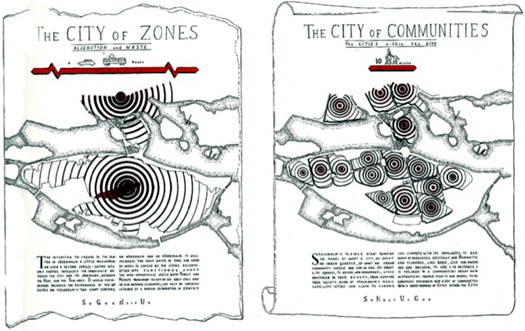
When in doubt, always read your Leon Krier.
Be Honest!
We must implore our state politicians to be honest with Redevelopment 2.0’s intent. Today, it is based upon the removal of blight and providing housing that is affordable. Blight is not a core issue anymore. Unfortunately, most of the buildings we built in name of replacing blight are now considered junk space. Therefore, we need a new vision and I contend we should be building towards more resilient and adaptable places (and housing) as we face the concurrent crises of climate change, earthquakes, tsunami, and economic malaise. In short, we need to think in terms of building towards a long-term future and not a blighted past.
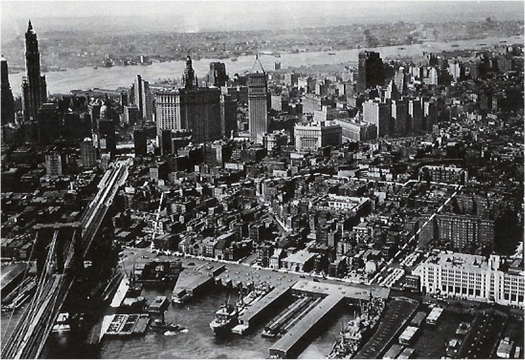
Functional, enduring and diverse neighborhoods were considered blight.
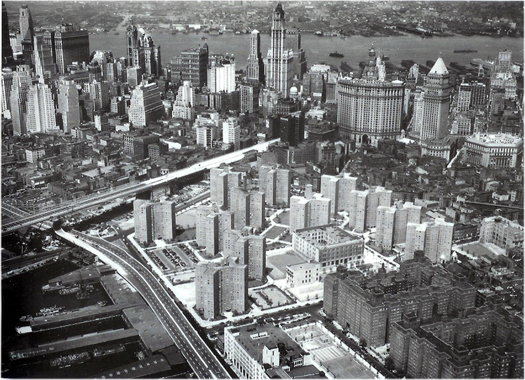
Urban renewal created Blight 2.0.
(Re)Build at the Neighborhood/Transit-Oriented Development (TOD) Scale
The neighborhood/TOD unit, a roughly 160 acre, 5-minute walk from center to edge, is the scale at which we live our daily lives. This unit exists in multiple contexts — edges, cores, general residential areas… and, this is the scale of the new economy, the transit station area, which is in need of both public infrastructure investment and great design to be successful.
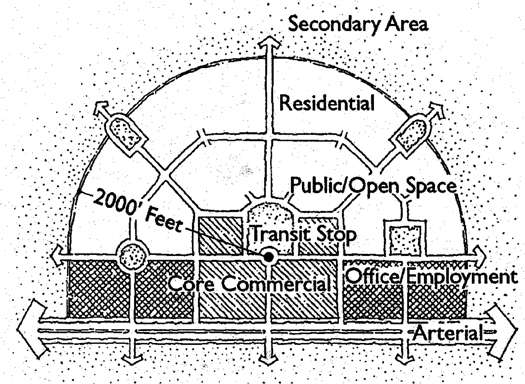
A California invention… Use it! Peter Calthorpe’s TOD Neighborhood Unit.
Think of the Neighborhood Unit as a tool to balance our social obligations (regional mobility and affordable housing) with necessary economic development (new construction) that can be understood by neighbors, decision-makers and planning staff. Redevelopment agencies historically covered large areas with multiple communities using the same coarse tool (eminent domain) throughout. The Neighborhood scale allows us to refine our tools to focus on targeting those different places (centers and edges). The New Urbanism and the rise of Form-Based Codes has made it readily apparent that 20th century planning tools, with their segregated/specialized land uses, are not applicable in our new century.
Environmental Review Reform
California requires a new development disclosure process (California Environmental Quality Act, CEQA). CEQA, like the federal NEPA, requires environmental reports to plan, mitigate and disclose the impacts of new development. However, CEQA is mostly used as a vehicle for legal challenges to stop any development and perceived as an ‘environmentalist tool.’ I ask that we look at the shear amount of poor development allowed under CEQA over the past 30-years and understand its true intent of ‘disclosing’ development plans.
CEQA does not take economic development into account. I recommend incorporating the concept of (re)capturing the value of public infrastructure investment to boost the economic development benefit redevelopment brings to a neighborhood. Scott Polikov, Peter Katz, Chuck Marohn, and Joe Minicozzi are teaching the nation how ‘Value Capture’ is our 21st century public/private partnership imperative for economic development. This should be a mitigation tool in our CEQA project impact review. This is positive, rather than negative.
Plus, CEQA always assumes that the ‘No Project’ alternative is the best plan as it assumes pristine nature everywhere. Therefore, anything we build is considered a negative impact on our environment. That is simply not honest or true. A place-based approach to CEQA would allow us to build better urbanism, less suburban sprawl, and more truly rural and natural places.
This Too is Short Term Thinking!
Everything I am writing about is concerned with today, the right now! Redevelopment was set up to improve our urban cores. We changed it to serve as a tax generator to provide public services. In the process, we have become urban and our cities are better than ever. The success of downtown San Diego has people asking if we even need redevelopment again. They are right, as the NEXT need for redevelopment will be fixing the economically disadvantaged and vacated swaths of suburban sprawl. These places are very expensive and difficult to fix. A new Redevelopment (3.0) will be necessary to make these places competitive, attractive and livable in a post-auto-oriented world.
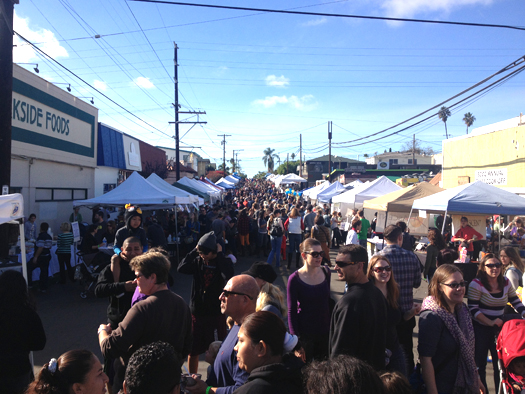
The goal is better built places for everyone to enjoy (A neighborhood center celebrates)!
However, the pipes and streets are only 20 – 30 years old and I believe we have time to work this out while we figure out Redevelopment for the next 5 – 10 years. This decade is the proving ground as we transition our cities, towns and neighborhoods for 21st century relevance.
If PlaceShakers is our soapbox, our Facebook page is where we step down, grab a drink and enjoy a little conversation. Looking for a heads-up on the latest community-building news and perspective from around the web? Click through and “Like” us and we’ll keep you in the loop.


